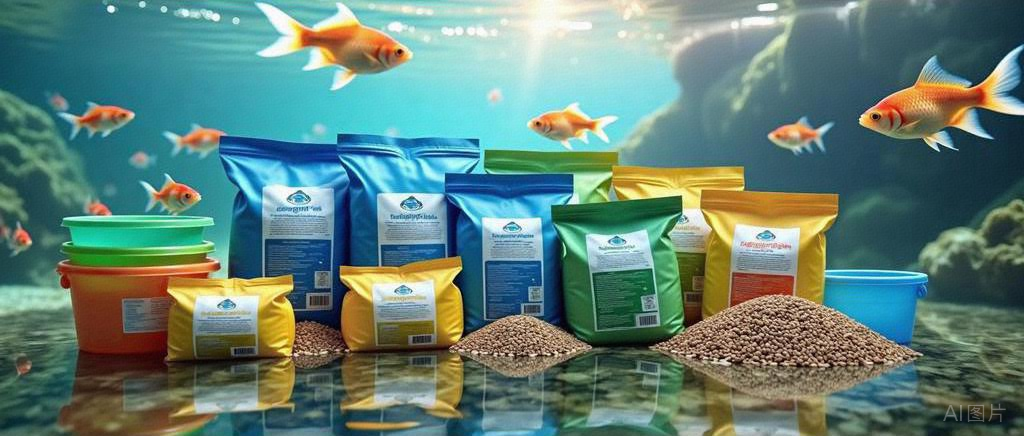Innovation of aquatic feed technology: driving aquaculture to a new height
Release time:
2025-08-02
In the rapidly developing aquaculture industry, innovation in aquatic feed technology has emerged as a key driving force behind industry advancement. With the ever-growing demand for aquatic products and increasing requirements for sustainable farming practices, the field of aquatic feed is undergoing unprecedented technological transformation. These innovations not only enhance the quality and efficiency of feed but also have a profound impact on the entire aquaculture ecosystem.

In the rapidly developing aquaculture industry, innovation in aquatic feed technology has emerged as a key driving force behind industry advancement. With the ever-growing demand for aquatic products and increasing requirements for sustainable farming practices, the field of aquatic feed is undergoing unprecedented technological transformation. These innovations not only enhance the quality and efficiency of feed but also have a profound impact on the entire aquaculture ecosystem.
**Precision Nutrition Formulation Technology: Customized Nutritional Solutions**
Traditional aquatic feed formulations often adopt a “one-size-fits-all” approach, which struggles to meet the diverse nutritional needs of different aquatic species at various growth stages. Today, precision nutrition formulation technology has become a focal point in the industry. Through in-depth research into the physiological characteristics, nutritional requirements, and metabolic mechanisms of aquatic animals—combined with advanced analytical and detection technologies—feed developers can accurately calculate the specific nutrients and their proportions needed by aquatic animals at each growth stage.
Take shrimp farming as an example. During the juvenile stage, shrimp require feed rich in high-quality protein, specific amino acids, and minerals to support rapid growth and molting. In contrast, adult shrimp benefit more from feed that enhances immunity and improves meat quality. Precision nutrition formulation technology enables the customization of feed formulations tailored to these specific needs at different shrimp growth stages, improving feed conversion rates, reducing feed waste, lowering farming costs, and simultaneously enhancing both the yield and quality of aquatic products.
**Application of Novel Ingredients: Expanding Sustainable Resources**
With the growing scarcity and rising costs of traditional feed ingredients such as fishmeal, the search for new, sustainable alternatives has become a major direction in aquatic feed innovation. In recent years, various technologies for applying novel feed ingredients have emerged.
Significant progress has been made in plant protein substitution technology. By modifying plant proteins derived from soybeans, peas, wheat, and others—improving their amino acid profiles and reducing anti-nutritional factors—these ingredients can partially replace fishmeal.
Insect protein is also making its way onto the stage of aquatic feed. Insects such as black soldier flies and mealworms are rich in high-quality protein, fat, and minerals, and offer advantages such as short growth cycles, low farming costs, and environmental friendliness. The large-scale production of insect protein through insect farming technology and its application in aquatic feed not only alleviates the pressure on traditional ingredients but also opens up new resource channels for the feed industry.
**Innovations in Feed Processing Technology: Enhancing Product Performance**
Innovations in feed processing technology are crucial for improving the quality and performance of aquatic feed. Advanced ultra-fine grinding technology can reduce feed ingredients to extremely fine particles, making nutrients more digestible and absorbable for aquatic animals. This not only improves feed utilization but also reduces water pollution caused by feed residues.
The development of extrusion and pelleting technology has also brought numerous benefits to aquatic feed. Through the application of high temperature, high pressure, and high shear forces, feed ingredients undergo a series of physical and chemical changes during extrusion—including starch gelatinization and protein denaturation—thereby enhancing palatability and digestibility. Additionally, extruded feed exhibits good water stability, reducing nutrient loss and maintaining cleaner water. Some advanced extrusion equipment can also achieve precise control over feed pellet size, shape, and density to meet the feeding habits of different aquatic species.
**Functional Additive Technology: Enhancing Farming Efficiency**
To address various challenges in aquaculture, functional additive technology has become a highlight of aquatic feed innovation. Immune enhancers, such as β-glucan and probiotics, are key components that can activate the immune systems of aquatic animals, strengthening their resistance to diseases. In today’s increasingly complex farming environments, these immune enhancers help reduce the use of antibiotics and ensure the quality and safety of aquatic products.
Anti-stress additives are another important category of functional additives. Aquatic animals may experience compromised growth and health under stress conditions such as transportation or water quality fluctuations. Anti-stress additives containing ingredients like vitamin C, E, and amino acids help alleviate stress responses and maintain healthy growth.
The application of enzymes in aquatic feed is also becoming more widespread. Enzymes such as lipases, amylases, and proteases can supplement the digestive enzymes in aquatic animals, improving feed digestion and absorption efficiency and promoting growth and development.
**Smart Feeding Technology: Enabling Precision Aquaculture Management**
With the rapid advancement of information technology, smart feeding technology is bringing an intelligent transformation to the application of aquatic feed. By using sensors to monitor real-time parameters of the farming environment—such as water temperature, dissolved oxygen, ammonia nitrogen—as well as the feeding behavior of aquatic animals, smart feeding systems can precisely control the amount and timing of feed distribution based on this data.
This technology helps avoid the waste of feed and deterioration of water quality caused by overfeeding, while ensuring that aquatic animals receive adequate nutrition under varying environmental conditions. Smart feeding technology also enables remote monitoring and operation, facilitating efficient management by farmers, reducing labor intensity, and enhancing the overall intelligence level of aquaculture production.
Tag:
Recommended
Share


